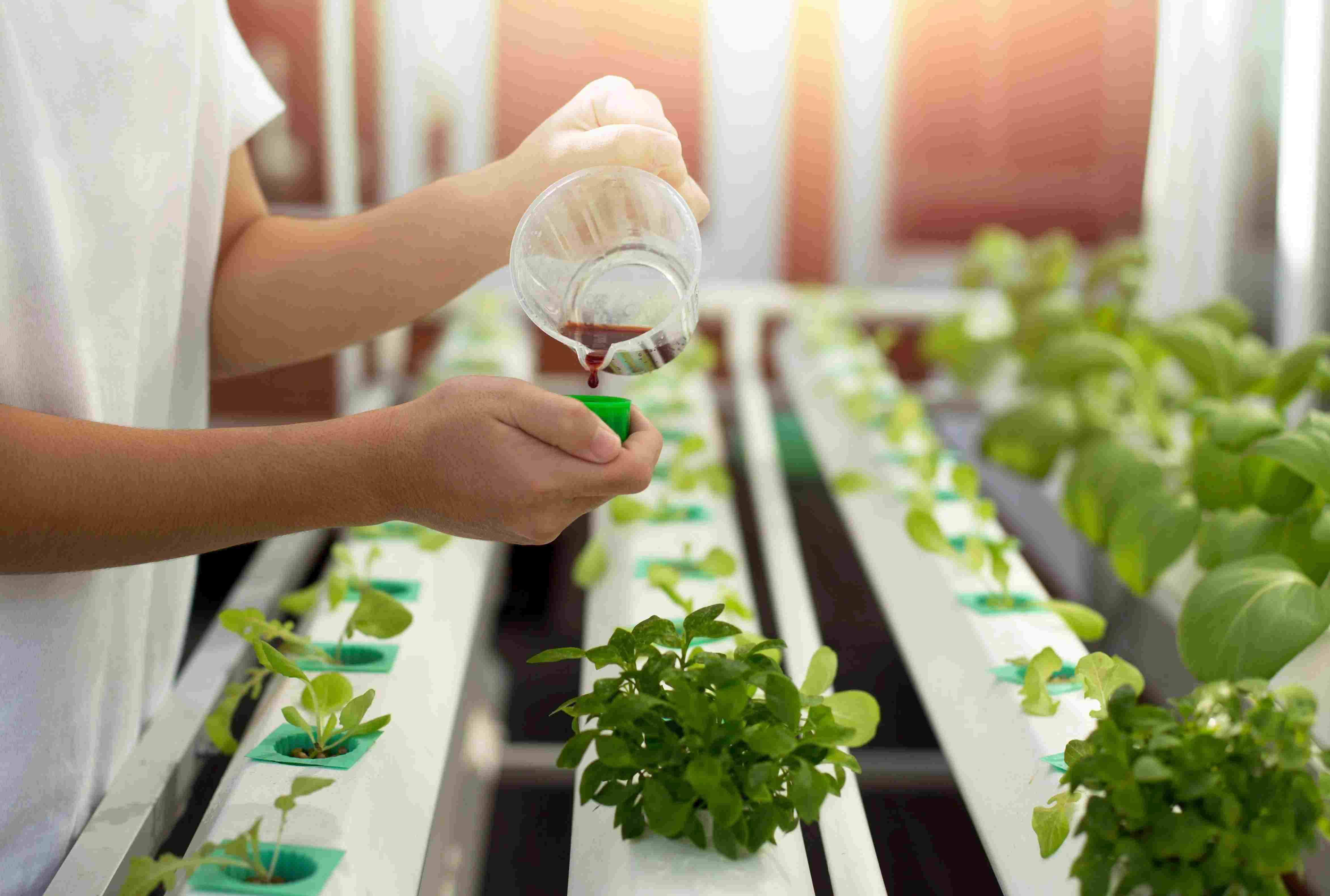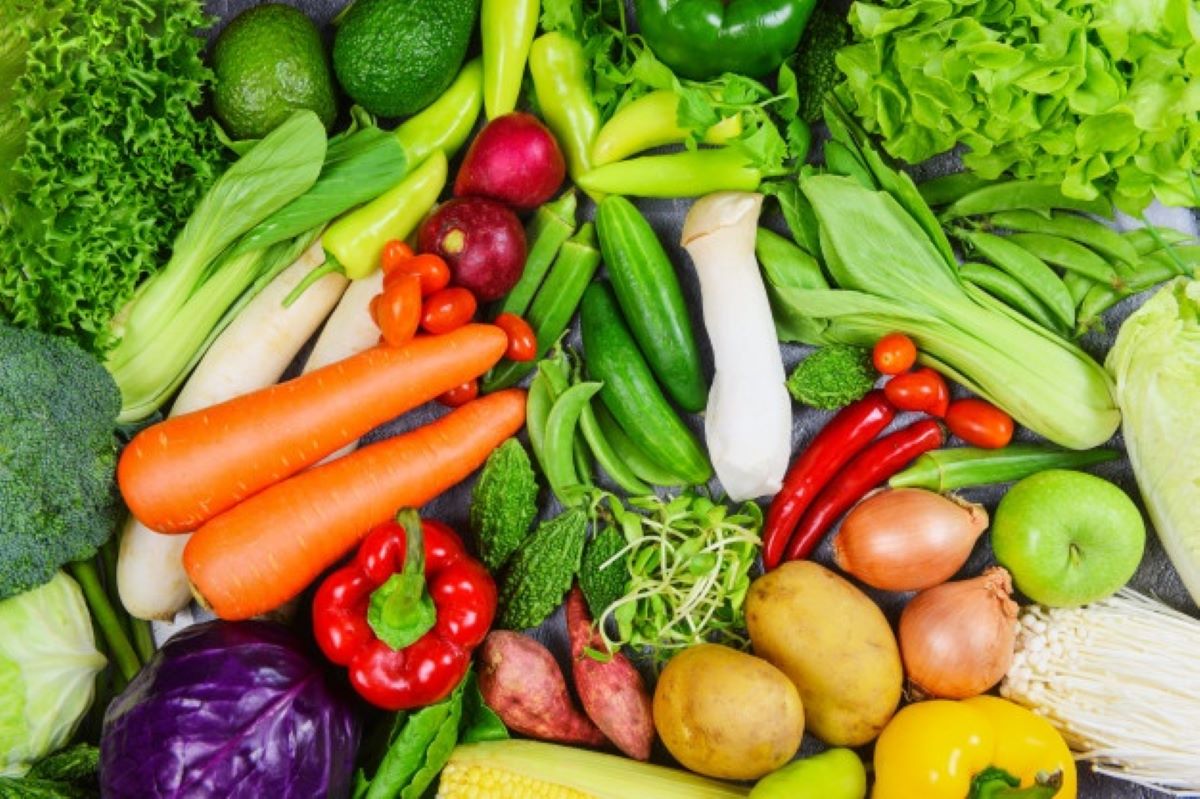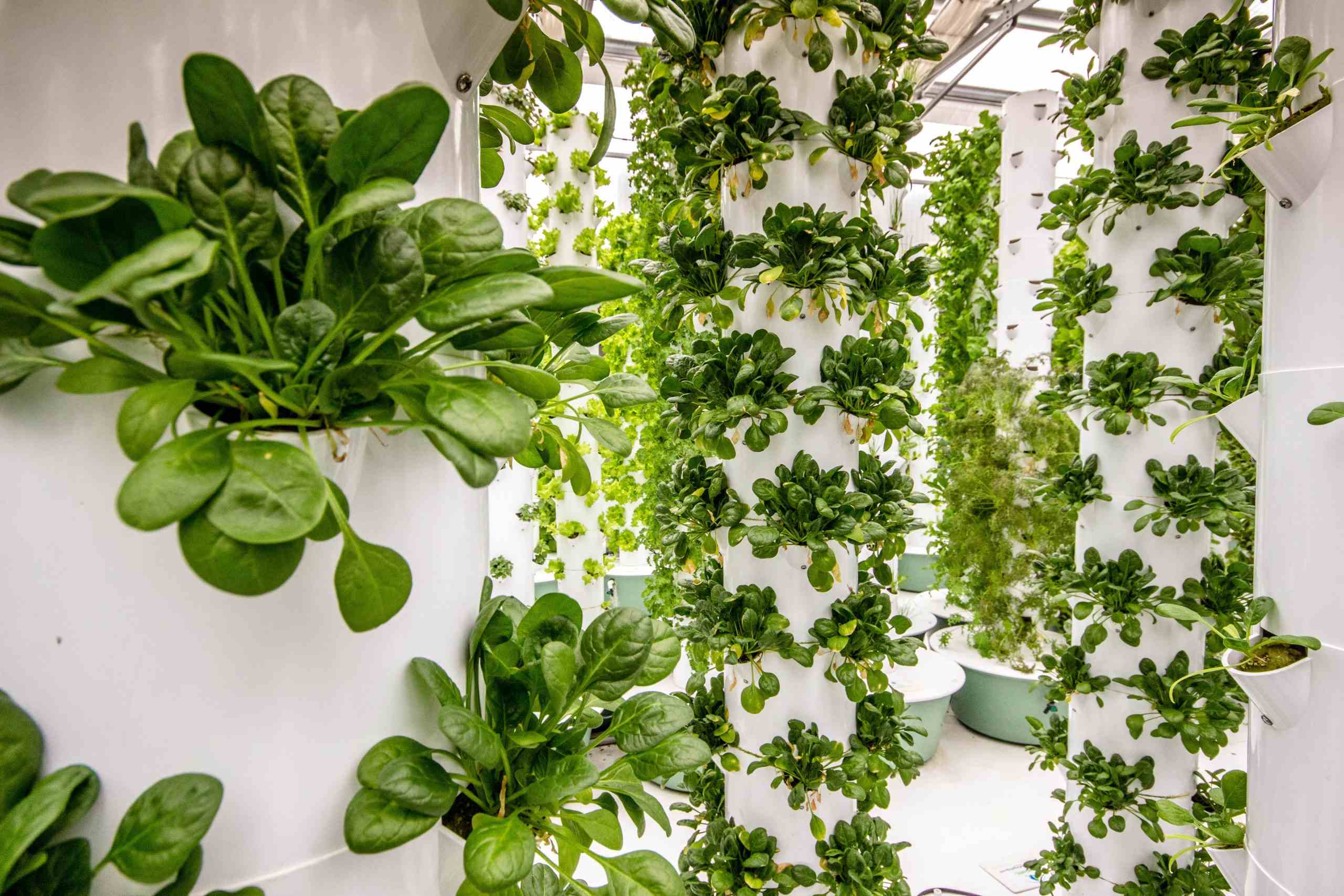Home>Gardening News and Trends>Gardening Trends>What Nutrient Strength For High-Pressure Aeroponics


Gardening Trends
What Nutrient Strength For High-Pressure Aeroponics
Modified: January 22, 2024
Boost your gardening game with nutrient strength for high-pressure aeroponics. Stay updated on the latest gardening trends and techniques.
(Many of the links in this article redirect to a specific reviewed product. Your purchase of these products through affiliate links helps to generate commission for Chicagolandgardening.com, at no extra cost. Learn more)
Table of Contents
- Introduction:
- What is High-Pressure Aeroponics?
- The Importance of Nutrient Strength in High-Pressure Aeroponics
- Factors to Consider in Determining Nutrient Strength
- Key Nutrients and their Impact on High-Pressure Aeroponics
- Experimentation and Adjustments: Finding the Optimal Nutrient Strength
- Monitoring Nutrient Strength in High-Pressure Aeroponics Systems
- Common Challenges and Troubleshooting Tips for Nutrient Strength
- Conclusion
Introduction:
Gardening trends are constantly evolving, with new and innovative techniques emerging to maximize plant growth and yield. One such technique that has gained significant attention in recent years is high-pressure aeroponics. This cutting-edge method of cultivation involves suspending plant roots in a mist of nutrient-rich water, allowing for efficient nutrient absorption and optimal plant growth.
In high-pressure aeroponics, the nutrient solution is pressurized and delivered to the roots as fine droplets, ensuring that every root receives an equal amount of nutrients. This precise delivery system promotes robust growth and increased yields, making it an attractive option for gardeners and farmers alike.
While there are several key factors to consider when setting up a high-pressure aeroponics system, one crucial aspect to pay attention to is the nutrient strength. The right balance of nutrients is essential for plants to thrive and utilize the available resources effectively. Determining the optimal nutrient strength for high-pressure aeroponics can significantly impact plant health, growth rates, and overall productivity.
This article aims to explore the significance of nutrient strength in high-pressure aeroponics and provide valuable insights for growers. We will discuss the factors to consider in determining nutrient strength, highlight the key nutrients necessary for optimal plant growth, and offer tips for monitoring and adjusting nutrient strength in high-pressure aeroponic systems.
So, whether you are new to high-pressure aeroponics or a seasoned gardener looking to refine your nutrient management strategies, read on to discover how to achieve the perfect balance of nutrients for thriving plants in a high-pressure aeroponic setup.
What is High-Pressure Aeroponics?
High-pressure aeroponics is an advanced technique of growing plants that involves suspending the roots in a mist of nutrient-rich water. Unlike traditional soil-based or hydroponic systems, high-pressure aeroponics relies on delivering nutrients directly to the roots through a high-pressure system, ensuring optimal absorption and utilization of nutrients.
The key feature of high-pressure aeroponics is the use of pressurized pumps to create a fine mist of nutrient solution. This mist is then directed towards the root zone of the plants, allowing for efficient nutrient uptake. The mist is composed of tiny droplets, which closely resembles the size of roots’ root hairs, facilitating better absorption.
By utilizing high-pressure aeroponics, plants can access and absorb nutrients more effectively, resulting in faster growth rates, increased root development, and enhanced overall plant health. In addition, the oxygen-rich environment created by the misted nutrient solution promotes robust root growth.
Compared to other cultivation methods, high-pressure aeroponics offers several advantages. Firstly, it allows for maximum nutrient absorption, minimizing wastage and maximizing plant efficiency. Secondly, high-pressure aeroponics provides better access to oxygen for the roots, promoting healthier and more vigorous growth. Lastly, since the system is soilless, it eliminates the risk of soil-borne diseases and pests, providing a cleaner and more controlled environment for plant growth.
One of the major benefits of high-pressure aeroponics is its versatility. This method can be used for a wide range of plants, including vegetables, herbs, flowers, and even fruit trees. It can be implemented in small-scale systems for home gardening or scaled up for commercial farming.
Overall, high-pressure aeroponics revolutionizes the way plants obtain nutrients and facilitates optimal growth conditions. By utilizing the power of misted nutrient solution and pressurized pumps, this innovative technique is changing the landscape of modern gardening and opening up new possibilities for growers around the world.
The Importance of Nutrient Strength in High-Pressure Aeroponics
In high-pressure aeroponics, the nutrient strength refers to the concentration of essential nutrients in the water solution that is delivered to the plant roots. It plays a crucial role in the growth and development of plants, as the right balance of nutrients is essential for optimal plant health and productivity.
Proper nutrient strength is vital for high-pressure aeroponics because it directly affects the plant’s ability to absorb essential elements for growth, such as nitrogen, phosphorus, potassium, and micronutrients. These nutrients are necessary for various physiological processes, including photosynthesis, cell division, and the production of proteins and enzymes.
If the nutrient strength is too low, plants may suffer from nutrient deficiencies, leading to stunted growth, yellowing leaves, and reduced productivity. On the other hand, if the nutrient strength is too high, plants may experience nutrient toxicity, causing leaf burn, root damage, and even plant death.
Optimizing the nutrient strength in high-pressure aeroponics involves finding the right balance that meets the plant’s nutritional needs without overloading them. This delicate balance is influenced by several factors, including the plant species, growth stage, environmental conditions, and the specific nutrient requirements.
For instance, leafy greens like lettuce and spinach generally require higher nitrogen levels for foliar growth, while fruiting plants like tomatoes and peppers benefit from higher potassium levels to support flower and fruit development. Understanding the nutrient needs at different growth stages is crucial to achieve optimal results.
Furthermore, monitoring and adjusting the nutrient strength throughout the growth cycle is essential in high-pressure aeroponics. As plants grow and their nutrient requirements change, it is important to make appropriate adjustments to maintain the optimal nutrient balance. Regular testing of the nutrient solution, either through electrical conductivity (EC) or parts per million (PPM) measurements, can help ensure that the nutrient strength remains at the desired level.
By maintaining the right nutrient strength in high-pressure aeroponics, growers can ensure healthy plant growth, maximize yields, and minimize nutrient-related issues. It allows for efficient nutrient absorption, leading to robust root development, increased foliage growth, and ultimately, bountiful harvests.
Factors to Consider in Determining Nutrient Strength
When determining the nutrient strength in high-pressure aeroponics, several factors need to be taken into consideration. These factors influence the specific nutrient requirements of the plants and affect the optimal nutrient strength for successful growth and development.
1. Plant Species: Different plant species have varying nutrient needs. Leafy greens, for example, may require higher levels of nitrogen, while flowering plants may benefit from increased phosphorus and potassium. Understanding the specific nutrient requirements of the plants you are growing is essential in determining the nutrient strength.
2. Growth Stage: The nutrient requirements of plants change at different growth stages. Seedlings and young plants require a different nutrient balance compared to mature plants. Adjusting the nutrient strength based on the growth stage will help provide the necessary nutrients for each developmental phase.
3. Environmental Conditions: Environmental factors such as temperature, humidity, and light intensity can influence nutrient uptake and utilization. Higher temperatures and increased light intensity may require the adjustment of nutrient strength to support the increased metabolic activity of the plants.
4. Water Quality: The quality of the water used in the high-pressure aeroponic system can impact nutrient strength. Water sources with high mineral content or imbalanced pH levels can affect nutrient availability and absorption. Monitoring and adjusting the nutrient strength in relation to water quality is important for maintaining optimal plant nutrition.
5. Nutrient Solution Concentrate: The concentration of nutrient solution used in the system will determine the initial nutrient strength. It is important to follow the recommended dilution ratios provided by the nutrient manufacturer and adjust the nutrient strength based on the specific needs of the plants.
6. Nutrient Uptake Efficiency: The efficiency of nutrient uptake varies among plant species and even among individual plants. It is crucial to observe the plants closely and monitor their response to the nutrient strength. Adjustments may be needed based on visual cues such as leaf color, growth rates, and overall plant health.
By carefully considering these factors, growers can determine and adjust the nutrient strength in high-pressure aeroponics to meet the specific requirements of the plants. Regular observation, monitoring, and experimentation will help achieve the optimal nutrient balance for robust growth, healthy plants, and abundant harvests.
Key Nutrients and their Impact on High-Pressure Aeroponics
In high-pressure aeroponics, several key nutrients play a vital role in supporting plant growth, development, and overall health. Understanding the impact of these nutrients is crucial in maintaining optimal nutrient strength and ensuring successful aeroponic cultivation.
1. Nitrogen (N): Nitrogen is an essential nutrient that is responsible for promoting leafy green growth and overall plant vigor. It plays a crucial role in photosynthesis, protein synthesis, and chlorophyll production. In high-pressure aeroponics, providing an adequate amount of nitrogen is crucial for sustained foliage development and healthy plant growth.
2. Phosphorus (P): Phosphorus is essential for promoting root development, flower formation, and fruiting. It is involved in energy transfer, DNA synthesis, and the production of enzymes and hormones. Adequate phosphorus levels in the nutrient solution are particularly important during the early stages of plant growth and during flowering and fruiting cycles.
3. Potassium (K): Potassium is crucial for maintaining cellular functions and regulating plant metabolism. It plays a vital role in water and nutrient uptake, enzyme activation, and disease resistance. Adequate potassium levels in high-pressure aeroponics promote overall plant health, fruit quality, and yield.
4. Calcium (Ca): Calcium is essential for cell wall development and preventing diseases and disorders, such as blossom end rot in tomatoes. It plays a role in nutrient uptake and transportation within the plant. Maintaining proper calcium levels in the nutrient solution is essential for strong cell structure and healthy plant growth.
5. Magnesium (Mg): Magnesium is an essential component of chlorophyll and is crucial for photosynthesis. It aids in the production of energy-rich ATP molecules and is involved in enzyme activity. Maintaining adequate magnesium levels in high-pressure aeroponics ensures proper photosynthetic efficiency and overall plant vitality.
6. Micronutrients: In addition to the macronutrients mentioned above, micronutrients are also essential for plant growth. These include iron, manganese, zinc, copper, boron, molybdenum, and chlorine. Although required in smaller quantities, these micronutrients are necessary for specific physiological and biochemical processes, such as enzyme activation, nutrient utilization, and hormone synthesis.
The proper balance and availability of these key nutrients in high-pressure aeroponics are vital for healthy and vigorous plant growth. Monitoring the nutrient strength and ensuring adequate levels of these nutrients will support optimal plant development, yield, and overall success in high-pressure aeroponic systems.
Experimentation and Adjustments: Finding the Optimal Nutrient Strength
Finding the optimal nutrient strength in high-pressure aeroponics is a process that often involves experimentation and adjustments. Each plant species and each growing environment may have different nutrient requirements, making it essential for growers to fine-tune the nutrient strength for optimal results.
A recommended starting point is to follow the guidelines provided by the nutrient manufacturer for the specific plant species being grown. These guidelines typically suggest a range of nutrient strength based on a specific growth stage. However, it’s important to remember that these recommendations are general guidelines and may require further adjustments based on the specific needs of the plants and the growing conditions.
One effective method for determining the optimal nutrient strength is through controlled experiments. Growers can choose a small group of plants and test different nutrient strengths to observe the plants’ response. By using varying concentrations of the nutrient solution, growers can track the growth, health, and productivity of the plants to identify the ideal nutrient strength that yields the best results.
During the experimentation process, it is important to closely monitor the plants’ development, assess their overall health, and observe any signs of nutrient deficiencies or toxicities. Visual cues such as leaf color, root growth, and plant vigor can provide valuable insights into the plants’ nutrient requirements.
In addition to visual observations, it is recommended to regularly test the pH and electrical conductivity (EC) levels of the nutrient solution. This helps to ensure that the pH stays within the optimal range for nutrient availability and absorption. The EC level provides an indication of the nutrient concentration and can guide growers in making adjustments to the nutrient strength.
It’s important to note that adjustments to the nutrient strength should be made gradually, allowing the plants time to adapt and respond. Making sudden and drastic changes to the nutrient strength may shock the plants and hinder their growth and development.
Furthermore, ongoing plant observation and data collection are essential for long-term success. By keeping track of the nutrient strength, plant growth rates, yields, and any observed issues, growers can make informed decisions and continually refine the nutrient strength for optimal results.
Remember, achieving the perfect nutrient strength requires patience, observation, and a willingness to adapt. Through careful experimentation, frequent monitoring, and adjustments based on the plant’s response, growers can find the optimal nutrient strength that promotes robust growth, enhances plant health, and maximizes yield in high-pressure aeroponic systems.
Monitoring Nutrient Strength in High-Pressure Aeroponics Systems
In high-pressure aeroponics systems, monitoring the nutrient strength is essential to ensure that the plants are receiving the optimal balance of nutrients for healthy growth and productivity. By regularly checking and adjusting the nutrient strength, growers can maintain the ideal nutrient concentration and prevent nutrient-related issues.
One of the primary methods of monitoring nutrient strength is through measuring electrical conductivity (EC). EC is a measure of the total dissolved salts in the nutrient solution and provides an indication of its nutrient concentration. By using a handheld EC meter, growers can obtain real-time measurements and assess if the nutrient strength is within the desired range.
Most nutrient manufacturers provide guidelines or recommended EC ranges for different plant species and growth stages. By comparing the measured EC with the recommended EC, growers can determine if adjustments to the nutrient strength are necessary. If the measured EC is too high, it may indicate an excessive nutrient concentration, while a low EC may indicate a nutrient deficiency.
In addition to EC, growers should also monitor the pH level of the nutrient solution. pH affects nutrient availability and uptake by the plants’ roots. The optimal pH range for high-pressure aeroponics typically falls between 5.5 and 6.5. Regular pH testing using a pH meter or testing kit allows growers to adjust the nutrient strength to maintain the desired pH level for optimal nutrient uptake.
Visual observation of the plants is another important aspect of monitoring the nutrient strength in high-pressure aeroponics. Growers should closely examine the plants for any signs of nutrient deficiencies or toxicities. Common signs include discoloration or yellowing of leaves, stunted growth, leaf burn, or wilting. Adjustments to the nutrient strength can be made based on these visual cues to address any imbalances or deficiencies.
Regular inspection and maintenance of the high-pressure aeroponics system are also crucial for monitoring nutrient strength. Ensuring that the pipes, nozzles, and delivery system are clean and free from clogs or blockages helps maintain consistent nutrient delivery to the plants. Any issues with the system should be addressed promptly to prevent disruptions in nutrient availability.
It is important to establish a regular monitoring schedule to keep track of the nutrient strength in high-pressure aeroponics. This can range from daily to weekly measurements, depending on the growth stage of the plants and the specific environmental conditions. By maintaining consistent monitoring practices, growers can promptly identify any deviations from the desired nutrient strength and make the necessary adjustments to ensure optimal plant growth and development.
Monitoring the nutrient strength in high-pressure aeroponics systems is a proactive approach to provide the plants with the necessary elements for optimal growth and productivity. By leveraging tools such as EC and pH meters, along with visual observations, growers can fine-tune the nutrient strength and create an environment that supports healthy, vibrant plants in their high-pressure aeroponic gardens.
Common Challenges and Troubleshooting Tips for Nutrient Strength
While high-pressure aeroponics offers many benefits, growers may encounter challenges related to nutrient strength. Understanding these challenges and knowing how to troubleshoot them is crucial for maintaining optimal nutrient balance and ensuring successful plant growth. Here are some common challenges and troubleshooting tips for nutrient strength in high-pressure aeroponics:
1. Nutrient Deficiencies: Nutrient deficiencies can occur when the nutrient strength is too low or when plants are unable to absorb the nutrients effectively. Visual cues such as yellowing leaves, stunted growth, or nutrient-specific symptoms can indicate deficiencies. To address this challenge, increase the nutrient strength gradually and adjust the nutrient solution to provide the lacking element. Regularly monitor plants for improvement.
2. Nutrient Toxicity: Excessive nutrient strength can lead to nutrient toxicity, causing leaf burn, root damage, and reduced plant health. Symptoms may include leaf discoloration, wilting, or necrosis. Lower the nutrient strength gradually and flush the system with pH-adjusted water to help dilute and remove excess nutrients from the root zone.
3. pH Imbalance: pH levels that are too high or too low can impact nutrient availability and uptake. Measure the pH regularly and adjust it using pH up or pH down solutions to keep it within the optimal range (around 5.5 to 6.5). Monitoring pH is essential for maintaining nutrient strength and ensuring proper nutrient absorption.
4. Fluctuating EC Levels: EC levels that fluctuate excessively can affect nutrient delivery and plant health. Fluctuations can be caused by variations in water quality, nutrient solution concentration, or system malfunctions. Regularly monitor the EC levels and ensure consistent nutrient solution concentration and water quality. Address any issues or inconsistencies in nutrient delivery systems promptly.
5. Nutrient Solution Imbalance: Imbalances in nutrient ratios can lead to nutrient deficiencies or toxicities. Ensure that the nutrient solution is mixed properly according to the manufacturer’s instructions. Adjust the nutrient solution based on the specific nutrient requirements of the plants and their growth stages. Regularly monitor plants for any signs of nutrient imbalances.
6. Environmental Factors: Environmental conditions such as temperature, humidity, and lighting can affect nutrient uptake and utilization. Ensure that the growing environment is stable and that the plants have appropriate temperature and humidity levels. Adjust the nutrient strength accordingly to accommodate changes in environmental factors.
7. Nutrient Uptake Variability: Each plant species and even individual plants within the same species may have different nutrient uptake rates. Monitor plant growth, health, and visual cues closely to identify any variability in nutrient uptake. Adjust the nutrient strength as needed on an individual plant basis to ensure that each plant receives the necessary nutrients for optimal growth.
When troubleshooting nutrient strength issues in high-pressure aeroponics, it is important to approach the process systematically. Keep detailed records of any adjustments made, observe plant responses, and make gradual changes when addressing nutrient imbalances. Regular monitoring and timely adjustments will help maintain optimal nutrient strength and promote healthy plant growth in high-pressure aeroponic systems.
Conclusion
High-pressure aeroponics offers a revolutionary approach to plant cultivation, emphasizing efficient nutrient delivery and optimal plant growth. The nutrient strength in high-pressure aeroponics systems plays a critical role in providing plants with the necessary elements for robust growth, health, and productivity.
By considering factors such as plant species, growth stage, environmental conditions, water quality, and nutrient uptake efficiency, growers can determine and adjust the nutrient strength to meet the specific requirements of their plants. Fine-tuning the nutrient strength through experimentation and regular monitoring allows growers to achieve the optimal nutrient balance, leading to vibrant growth and abundant harvests.
Monitoring the nutrient strength in high-pressure aeroponics involves measuring electrical conductivity (EC) and monitoring pH levels. Utilizing tools such as pH and EC meters, along with visual observations, growers can make data-driven adjustments to optimize nutrient strength and maintain an ideal growing environment.
However, challenges are bound to arise in the realm of nutrient strength. Nutrient deficiencies, toxicity, pH imbalance, fluctuating EC levels, nutrient solution imbalance, variability in nutrient uptake, and environmental factors are common challenges that growers may encounter. By understanding these challenges and implementing troubleshooting strategies, growers can overcome these hurdles and ensure the sustained health and productivity of their high-pressure aeroponic systems.
In conclusion, achieving the optimal nutrient strength in high-pressure aeroponics requires careful attention, adjustment, and experimentation. By maintaining the appropriate nutrient balance, growers can unlock the full potential of their plants, enjoying the benefits of enhanced growth, increased yields, and a thriving high-pressure aeroponic garden.









